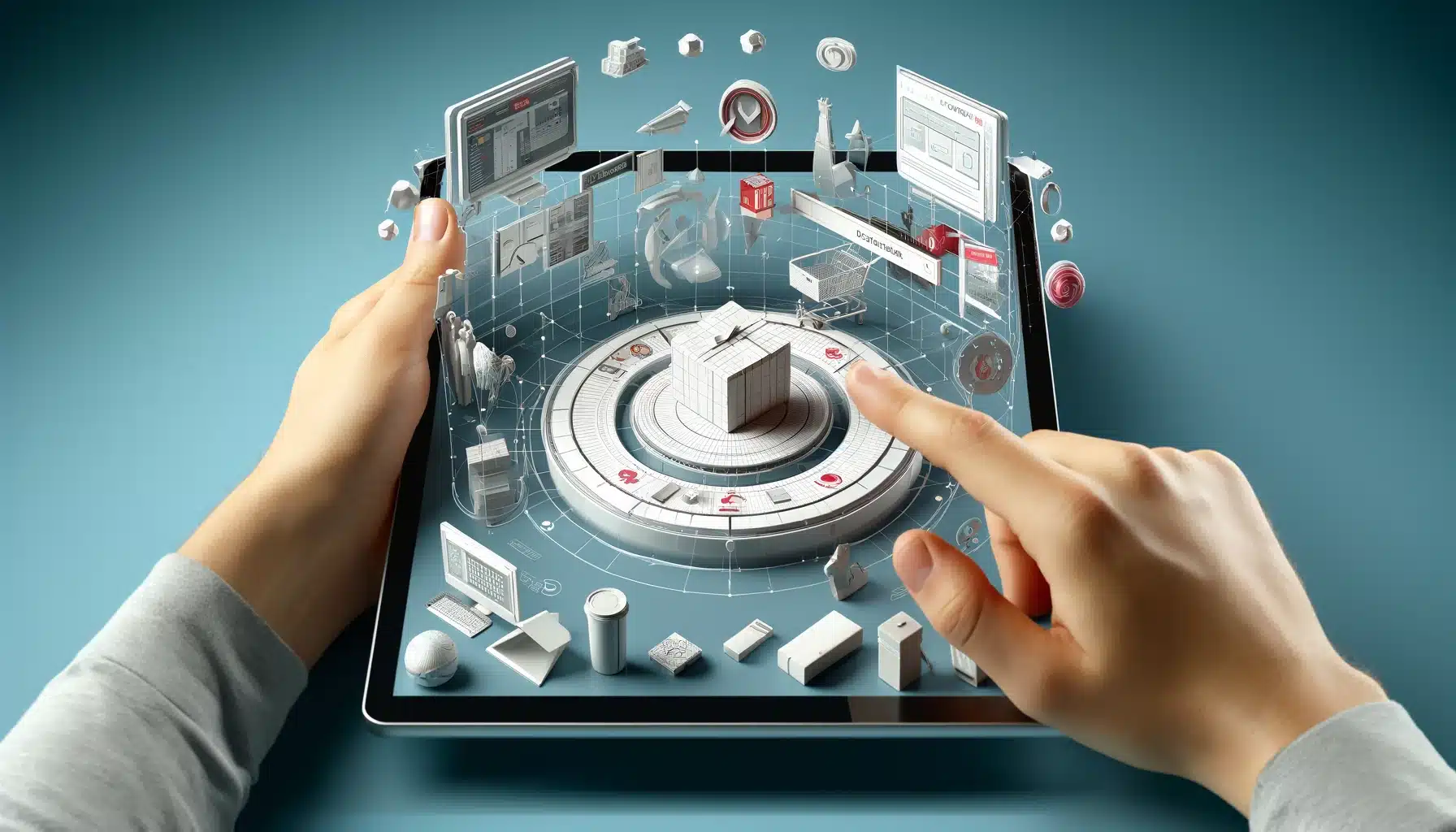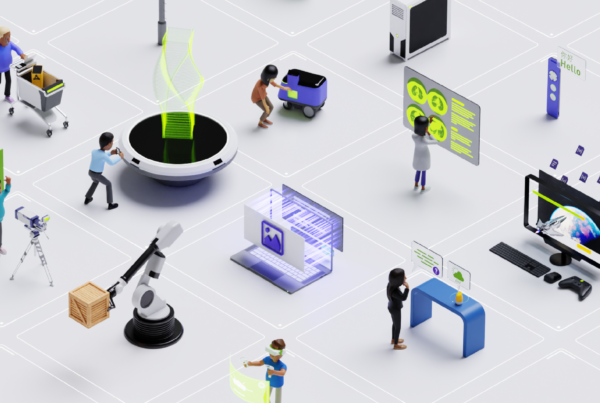Implementing 3D view technology in eCommerce is not just a trend; it’s a transformative approach that reshapes how customers interact with online products. As digital shopping becomes increasingly prevalent, the need for more interactive and realistic product displays grows. 3D viewing technology offers a solution by providing a richer, more detailed representation of products, allowing customers to explore every aspect before making a purchase.
This article will explore the undeniable benefits of 3D views for both retailers and shoppers, delve into the technical requirements and best practices for creating and integrating 3D models, and highlight the impact of this technology. Whether you are an established retailer looking to innovate or a new entrant aiming to stand out in the market, understanding and implementing 3D view technology can offer a significant competitive edge.
Implementing 3D View on eCommerce
The integration of 3D view technology in eCommerce signifies a major shift in how products are presented and perceived online. This advanced feature goes beyond conventional product displays, offering a more immersive and interactive experience that meets the expectations of modern consumers. Because it allows customers to examine products from every angle, 3D views provide a level of detail and engagement that traditional images and descriptions cannot match. This not only helps in building customer confidence but also significantly reduces return rates, as buyers have a clearer understanding of what they are purchasing.
Benefits of 3D View for Online Retailers
3D viewing technology is transforming online retail, offering a dynamic way to present products. Customers can interact with items in a detailed manner, increasing their confidence in purchasing decisions. This not only enhances customer satisfaction but also reduces return rates. Retailers leveraging 3D views set themselves apart in a competitive market, showcasing their products more effectively and innovatively.
Enhancing Customer Experience with 3D View
Customers today expect more from their online shopping experiences. 3D views provide an interactive and immersive way to explore products, closely mimicking the in-store experience. This technology allows customers to rotate, zoom, and inspect products from every angle, leading to better-informed purchasing decisions. Enhanced interaction fosters greater trust and satisfaction, encouraging repeat business and brand loyalty.
Case Studies on Implementing 3D View on eCommerce
Successful implementations of 3D technology in eCommerce, like those by IKEA and Nike, highlight the tangible benefits. These companies have seen increased engagement and higher conversion rates. Analyzing these case studies provides valuable insights into effective strategies and showcases the practical advantages of 3D views, making a strong case for their adoption.
Another noteworthy example is Hydrosoft, a leader in sauna and wellness solutions. Hydrosoft partnered with Mazing, an expert in augmented reality software, to develop a sophisticated 3D configurator for their saunas. This tool allows customers to customize every detail of their sauna and virtually place it in their home using Web AR. As a result, Hydrosoft experienced a 63% increase in customer interaction, a 44% rise in sales figures, and a 79% longer time spent on their website. This case study, detailed later in this article, demonstrates the significant impact 3D view technology can have on customer engagement and sales, reinforcing the value of adopting such innovations in eCommerce.
Future Trends in 3D eCommerce
The future of eCommerce lies in integrating 3D views with augmented reality (AR) and virtual reality (VR). These technologies will allow customers to visualize products in their own environments or explore virtual showrooms, creating a highly personalized shopping experience. Staying updated with these trends is crucial for businesses aiming to meet evolving consumer expectations and maintain a competitive edge.
Technical Aspects of Implementing 3D View on eCommerce
With 3D views, customers can interact with items in a highly detailed manner, exploring every angle and feature. This interactive experience significantly boosts customer confidence in their purchasing decisions, as they have a clearer and more comprehensive understanding of the product. As a result, customer satisfaction increases, and return rates decrease.
For retailers, leveraging 3D views sets them apart in a crowded market. It allows them to present their products more effectively and innovatively, capturing the attention of potential buyers. Moreover, implementing 3D views doesn’t require a hefty investment in hardware. Many solutions are cloud-based, making them both accessible and scalable for businesses of all sizes. Cloud-based solutions offer cost efficiency by eliminating the need for expensive on-premises equipment, ensuring easy scalability as your product range grows, and reducing the burden of maintenance and IT support.
Required Hardware and Software for 3D View
Implementing 3D views does not necessarily require significant investment in hardware; many solutions are cloud-based, making them accessible and scalable for businesses of all sizes.
Cloud-based solutions provide several advantages:
- Cost Efficiency: Eliminates the need for expensive on-premises hardware, reducing upfront costs.
- Scalability: Easily scales with business growth, allowing retailers to add more products without worrying about infrastructure limitations.
- Flexibility: Offers flexibility in deployment and updates, ensuring that the latest features and improvements can be quickly integrated.
- Maintenance: Reduces the burden of maintenance and IT support, as cloud service providers handle these aspects.
These benefits make 3D view technology an attractive option for retailers looking to enhance their online presence and provide a superior shopping experience without the need for substantial investments in physical infrastructure.
Choosing the Best 3D Rendering Software
Selecting the right 3D rendering software is critical for effective implementation. Consider factors like ease of use, integration capabilities, and the quality of rendered models. Tools like Autodesk Maya, Blender, and Unity offer various features suited to different needs. Evaluating these options based on specific requirements and budget constraints helps in making an informed choice.
Creating High-Quality 3D Models
The quality of 3D models directly impacts their effectiveness. Techniques such as photogrammetry and CAD modeling create detailed and accurate representations. Investing in skilled professionals or providing comprehensive training for in-house teams ensures high-quality models that offer a realistic and engaging presentation.
Integrating 3D View with eCommerce Platforms
Successful integration of 3D views into eCommerce platforms involves choosing compatible plugins or APIs, customizing the user interface, and optimizing the platform for additional data load. This enhances the overall shopping experience, ensuring the technology functions smoothly across all devices.
Optimizing User Experience with 3D View
Optimizing the user experience with 3D view technology involves ensuring seamless interaction, mobile compatibility, and effective presentation. Interactive features like rotation and zoom must be intuitive and responsive to enhance user engagement. Mobile optimization is crucial, as many customers shop on their phones, requiring fast load times and a responsive design. Effectively showcasing 3D models on product pages, combined with traditional product information, creates a comprehensive and engaging shopping experience that retains customer attention and drives conversions.
Interactive Features and Controls
Interactive features like rotation, zoom, and annotation tools significantly enhance the user experience. These controls allow customers to explore products in detail, leading to a better understanding and appreciation of the items. Implementing intuitive and responsive controls is essential for a seamless and enjoyable interaction.
Mobile Compatibility and Performance Optimization
Ensuring that 3D views are optimized for mobile devices is crucial, as a significant portion of online shopping occurs on smartphones and tablets. This involves optimizing load times, ensuring responsive design, and maintaining high performance across different operating systems and screen sizes. Effective mobile optimization enhances accessibility and user satisfaction.
Showcasing 3D Models Effectively
Strategically presenting 3D models on product pages attracts and retains customer attention. High-quality visuals, combined with traditional product information, create a comprehensive view that enhances understanding. Effective showcasing involves using 3D views to complement product descriptions and images, providing a richer context for shoppers.
Analyzing User Engagement with 3D Views
Monitoring customer interactions with 3D views provides valuable insights into behavior and preferences. Analytics tools can track metrics like interaction time, engagement rates, and conversion rates. Analyzing this data helps refine the implementation strategy, ensuring the 3D viewing experience evolves to meet customer needs and preferences.
Case Study: Implementing 3D View for Saunas
Hydrosoft, a leader in sauna and wellness solutions, introduced a 3D configurator to enhance customer experience and purchase confidence. Customers often struggled to choose the right sauna and visualize it in their homes. To address this, Hydrosoft partnered with Mazing, an expert in augmented reality software, to create a sophisticated 3D configurator.
Mazing’s 3D configurator allows customers to customize every detail of their sauna, from benches to lights. Using Web AR, customers can virtually place their customized sauna in their home with just one click. This innovation has significantly improved the customer experience, making the decision process easier and more interactive.
Results at a Glance:
- 63% More Interaction with Customers: Increased engagement through customization and exploration.
- 44% Higher Sales Figures: Enhanced confidence and visualization led to more sales.
- 79% Longer Time Spent on the Website: Interactive tools made the website experience more engaging.
Key Outcomes:
- Longer Website Visits: The configurator and Web AR feature encourage thorough exploration of products.
- More Customer Interaction: Interactive features foster better engagement and loyalty.
- Higher Sales Figures: Customers feel more certain about their purchase, leading to increased sales.
Implementing 3D view technology in eCommerce, as demonstrated by Hydrosoft’s collaboration with Mazing, shows the transformative potential of this innovation. The 3D configurator and Web AR features have revolutionized the customer experience by making it more interactive and engaging. These tools have not only increased customer interaction and satisfaction but also significantly boosted sales. Hydrosoft’s success story underscores the importance of adopting advanced technologies like 3D views and augmented reality to stay competitive and meet modern consumer expectations.
Conclusion
Implementing 3D view technology in eCommerce is more than just an enhancement; it is a game-changer in the digital retail landscape. This technology elevates the online shopping experience, providing customers with a detailed, immersive way to explore products. The benefits are clear: increased customer satisfaction, reduced return rates, and a competitive edge in a crowded market.
For retailers, the investment in 3D view technology pays off through enhanced product presentation and a deeper connection with customers. As consumers continue to demand more interactive and realistic online experiences, staying ahead with innovative solutions like 3D viewing is essential.
Looking forward, the integration of augmented reality (AR) and virtual reality (VR) will further revolutionize eCommerce, offering even more personalized and engaging shopping experiences. Businesses that embrace these advancements will not only meet the evolving expectations of tech-savvy consumers but also secure their position as leaders in the industry.
In summary, understanding and implementing 3D view technology equips eCommerce businesses with the tools to thrive in an ever-changing digital marketplace. This forward-thinking approach not only enhances the customer experience but also drives growth and success in the long term.





